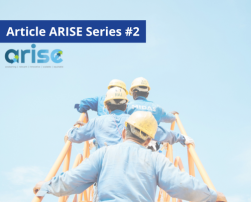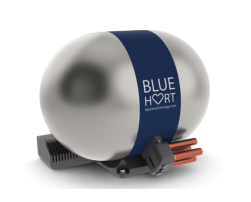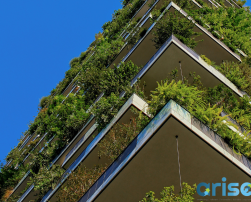
Article | The currency of skills #2: Economic value
As part of the ARISE Article series, the project addresses in this article the values of skills in the design and construction of qualified workers in society and as individuals. It also delves into how skilled workers can contribute to economic growth and competitiveness in different sectors.
Swapna SAHA

BUILD2050: Shaping Europe's Zero-Carbon, sharing knowledge for both students and professionals
BUILD2050 fosters sustainable, healthy European building practices through interdisciplinary courses aimed at decarbonising construction by 2050, supported by a network of academic and sector partners.
Editorial team

Developing the Italian Roadmap toward the skills needed for a Sustainable Built Environment
The RES2 project is developing the Italian roadmap to performing qualitative and quantitative analyses of the gap in skills needed to reach a carbon-neutral building environment.
Editorial team

Skills as a currency in the construction sector
If we are to address the skills shortages in construction, then we must view skills as more than just the tools for employment. Just as DNA is the blueprint for life, skills are the mechanisms of life. Skills are more than tools for jobs, they are part and parcel of our whole life and must be viewed as such.
Editorial team

Skills development in the EU building sector
This article delves into the multifaceted realm of skills development in Europe's construction and building sector, exploring the critical role it plays in shaping the industry's future. How is Europe investing in education, training, and professional development to create a workforce equipped to tackle the upcoming challenges, such as the decarbonisation of the building stock?
Editorial team

Human-centric innovation and skills for safety in construction
Explore the transformative journey of BEEYONDERS and HumanTech in the construction sector, focusing on human-centric innovation and safety. Discover how wearables, exoskeletons, and AI redefine industry standards, fostering efficiency and well-being.
Editorial team

Integrating human-centric design with emerging technologies in construction
Integrating human-centric design with BIM, IoT, Digital Twins, and additive manufacturing marks a transformative era in construction, enhancing efficiency, sustainability, and adaptability. The fusion of these technologies with human expertise redefines building design, construction, and management, despite challenges in data management and interoperability. The digital revolution reshapes the construction value chain, demanding a shift in industry roles, responsibilities, and a focus on continuous innovation and collaboration.
Editorial team

Technical development and use-case aspects of thermoacoustic heat pumps for existing houses
BlueHeart Energy (BHE) is a deep tech start-up and has developed a revolutionary thermoacoustic (TA) heat pump engine. This next generation of heat pump technology provides an alternative for vapour compression techniques and better meets the requirements of existing buildings that are not well met by today's technologies. BHE's TA engine will be supplied business to business to heat pump manufacturers in Europe and beyond.
Editorial team
Overview Article - The digital transformation of the built environment and Construction 4.0
Digital technologies have a very large untapped potential to revolutionise the building and construction industry. Buildings are evolving into intelligent and interconnected structures, adapting to the changing needs of occupants while also optimising energy efficiency. How is Europe addressing this digital shift, and how are building professionals changing the way they work?
Editorial team

Making Sustainability part of the Design Procurement
Sustainability can often be an afterthought and applied to the finished design without consideration of the impact the design will have in assembly and during life-cycle assessment. Most stakeholders vanish after handover, and this can translate into sustainability being forgotten or ignored. As well as these concerns, methods are also needed to prevent greenwashing and bring performance into the design frame.
Editorial team